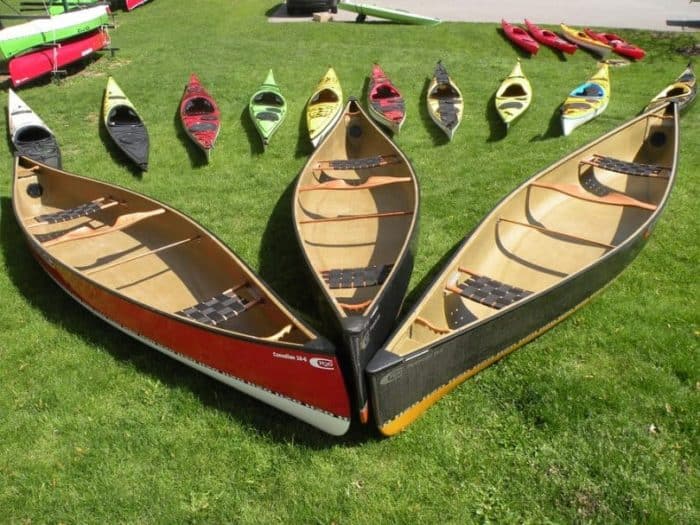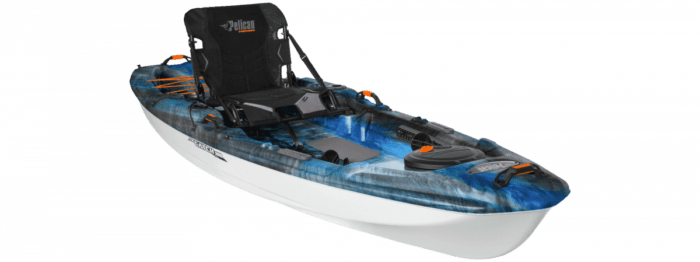Wet Suit vs Dry Suit: What is The Difference?
The ocean is a strange and fascinating place. Not only does it get darker the lower you go, but it also gets extremely cold. The temperature range is borderline insane from a comfortable 30 °C (86 °F) at the surface to a near-deadly −1 °C (30.2 °F) at the seabed.
Unless you are a professional explorer and scuba diver with specialized gear, it’s safe to assume that you will not be swimming the −1 °C (30.2 °F) depths. However, you could swim past the 200 meters below mark, where the temperature can average around four °C (39°F), which is comfortable by any stretch.
This is all to say that if you will be diving into the ocean, you will need exposure suits that protect you from this drastic loss of heat. Exposure suits come in two types: dry suits and wetsuits. While they do pretty much the same thing – help your body maintain some degree of warmth underwater, they aren’t the same thing.
Let’s indulge ourselves in a wet suit vs dry suit debate to see which one you need in which situation.
Wet Suit vs Dry Suit – Which Is Which?
Which is which between a wet suit and a dry suit? This is a far too common question among non-divers and divers alike. While some technicalities differentiate the two, the simplest answer lies in the name: a “dry suit keeps you dry while a wet suit doesn’t.”
What Is a Wet Suit?
A wet suit is a piece of clothing (often a full-body suit) designed to offer you thermal protection when diving. A wetsuit works on the principle that the best heat source you will have underwater is your body.
It’s therefore designed to contain your body heat even when you dive into cold water. Wetsuits are made out of closed-cell foam material full of thousands of little gas bubbles trapped within the suit’s structure.
Part of the reason it’s called a wetsuit is that, as soon as you dive into the water, the suit allows the small amount of water through its material, which forms a thin layer between the suit and your body. Gradually, thanks to your body heat, this thin layer of water warms up, maintaining your natural body temperature throughout the dive. This keeps you insulated from the cold water outside the suit.
Wetsuits are designed to be extra snug – they fit like a glove. If the suit is too big, it will let water in and out of it, which means that your body will waste too much energy continuously warming the water that is flowing in and out of the suit. This will deprive you of the much needed thermal insulation effect.
Another key feature of a wetsuit is the thickness. People diving in colder waters need thicker wetsuits that can withstand the lower temperatures of the water they are diving in. The opposite applies to people diving in warmer waters who need thinner wetsuits.
However, since everybody’s body is different (some people burn hot while others tend to run cold), the type of bodysuit you need depends on your body type. Some people can get away with diving in a lycra bodysuit (dive skin) when diving in warm waters, while others may need a 2mm thick suit in the same waters.
What Is a Dry Suit?
As the name suggests, a dry suit is one that keeps you completely dry. Unlike wetsuits, dry suits don’t let in any water at all. Your typical dry suit could be made out of:
- Crushed neoprene
- Heavy-duty nylon
- Foam neoprene
- Vulcanized rubber
Furthermore, it’s fully sealed with a tight combination of wrist seals, waterproof zippers, and a neck seal to keep your body completely dry. Unlike wetsuits, dry suits fit a bit more loosely to allow other insulating clothing layers underneath.
Another difference between a wetsuit and a dry suit is that a dry suit keeps your body warm by not only keeping it dry and allowing for the use of additional insulating layers underneath but also by keeping a layer of air between the suit and your body.
You can regulate this insulating air using inflator valves, which allow you to increase the gas as you get deeper into your dive.
Wetsuit vs Dry suit – Which One Should You Buy?
Any answer to this question will be loaded with personal biases. However, there are some fundamental properties of each type of suit that might help you decide between the two:
Warmth – Dry Suit
While each of these suits will keep you warm by providing you with insulation, dry suits tend to be more comfortable since you can add a layer of insulating clothing between your body and the suits. Furthermore, they keep your skin dry, as opposed to wetsuits.
Buoyancy – Wetsuit
You will indeed need training to go scuba diving in general. However, when it comes to diving with a wetsuit or a dry suit – it’s much easier to dive with a wetsuit as far as buoyancy is concerned. This is because the wetsuit compresses the deeper you go due to the increased water pressure.
The dry suit, on the other hand, uses compressed air between the suit and your body. Since you control the amount of air in there, maintaining neutral buoyancy in this kind of suit can be a little tricky and takes some getting used to.
Varying Conditions of Use – Dry suit
There is a good chance that you will be diving in more than one water body with varying temperature conditions. How effective the wetsuit you buy is in these conditions will depend on how thick or thin it is essentially.
Diving in warm waters often calls for thinner wetsuits, while diving in colder waters calls for thicker wetsuits, which means that you would need to buy a different wetsuit for every condition. Dry suits, on the other hand, offer you no such problems. Since you can layer underneath the suit, you can use the same dry suit for diving in any kind of water conditions all year round.
Cost of Ownership – Wetsuit
All you need to do to a wetsuit in terms of maintenance is rinse it off properly. A dry suit, on the other hand, will need seals replaced, socks and boots replaced, leaks patched up, and zippers replaced.
Whether you choose to buy a wetsuit or a dry suit depends on your preference. However, as far as the cost of ownership is concerned, wetsuits are cheaper to maintain, but you can use dry suits all year round in any kind of water.













